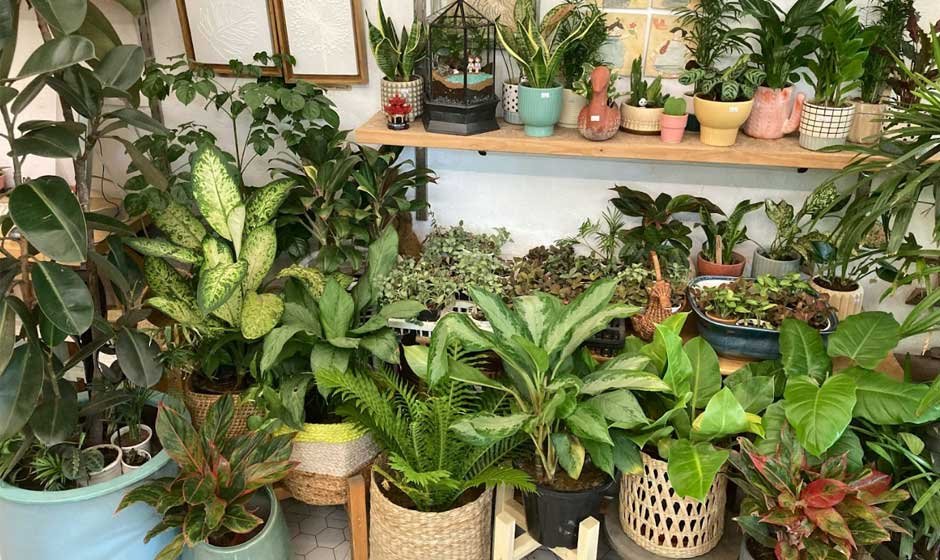As a professional grower or hobbyist, plant health is paramount. In a world where both climate change and human activity have forever altered natural ecosystems, plant health is more under threat than ever. While climate change has gone some way to reduce biodiversity and create new environments where pests can thrive, international travel and trade have caused pests and diseases to spread quickly around the world. This can ultimately lead to serious consequences, including damage to horticulture, crops and even the environment. While there are some legal controls in place throughout the world to safeguard plant health, having an understanding of the basic principles will assist you in your growing journey. Below, we explore the risks of importing plants and how integrated pest management is just one of the steps you can take to keep your existing crops and the wider environment safe.
What Are The Risks of Importing Plants?
Our gardens, greenhouses and interior living spaces get more exciting, vivid and interesting when you add new, imported varieties of plants. However, it is crucial that you are aware of the potential risks when importing plants. Without proper precautions, imported plants may carry hidden threats that can impact agriculture, ecosystems, and local economies. Here are some of the more serious risks:
Introduction of Pests and Diseases
One of the most serious risks of plant importation is the unintentional introduction of invasive pests and diseases. These can hitch a ride on leaves, stems, or soil, and once established, they may spread rapidly. Since native plants often lack defenses against foreign threats, the results can be devastating to local biodiversity and crop production. By importing plants, you’re essentially disrupting a natural order and ecosystem, so it is crucial that you have carried out the appropriate research and followed any necessary protocols, such as quarantining.
In most cases, individuals will require a permit to import plants, regardless of their profession. There are some exceptions to this rule, which cover scenarios where individuals are importing 12 or fewer of the ‘low-risk’ varieties.
Ecological Disruption
Imported plants can disturb the natural balance of local ecosystems. Proper cultivation is essential, as those who escape cultivation can become invasive and outcompete native species for resources, introduce new pathogens, or alter soil composition. Even non-invasive plants can carry seeds, pests, or fungi that disrupt food chains and natural habitats over time.
A good example of a non-native plant becoming invasive is Japanese Knotweed in the UK. Originally introduced for ornamental purposes in 1850, botanist Phillip von Siebold actually sold the plant to members of the public at Kew Gardens. Highly invasive and often causing structural damage, knotweed has gained such a reputation in the UK that failing to declare its presence during the sale of a property or land has become a criminal offense.
Economic Consequences
As you can imagine, the financial cost of managing invasive pests or plant diseases can be significant, particularly in the case of Japanese Knotweed above, which can lead to long delays and significant fines.
Farmers may suffer crop losses, governments may need to spend heavily on eradication programs, and trade restrictions can follow outbreaks. For this reason, it’s imperative to prevent any such incident from occurring.
How To Mitigate The Risks of Imported Plants
Prevention is always better than a cure, and thankfully, there are several practical ways to minimize the risks associated with importing plants. These measures help ensure that only healthy, pest-free plants cross borders, protecting both the environment and economy. Some common methods include:
Regulations & Restrictions
Each country has strict rules about which plants can be imported, from specific species lists to bans on soil or untreated wood packaging, where pests can hide during transit. Familiarizing yourself with these regulations is a key first step. Always check with your local agricultural authority before importing any plant material.
Plant Health Checks
Before plants are imported, many countries require thorough inspections to detect signs of disease or infestation. These health checks often take place at the source and again upon arrival. Visual inspections, lab testing, and quarantine periods may all be part of the process.
Phytosanitary Certificates
A phytosanitary certificate is an official document issued by the exporting country’s plant health authority. It confirms that the plants have been inspected and found free of harmful pests or diseases. This certificate is usually required for legal importation and ensures a higher standard of safety.
Pest Management Protocol
Carrying out integrated pest management (IPM) is essential when dealing with your existing plants and any imported additions. This might include isolating new arrivals for observation, using biological controls, or applying safe treatments to remove pests. Regular monitoring and early intervention are key to preventing problems from spreading. At its core, IPM is built on four key principles: proactive inspection, sanitation, exclusion, and targeted interventions. By addressing insect pest problems at their source, this method ensures effective, sustainable results while reducing environmental impact.
IPM has become the preferred standard for food safety-focused pest control. It emphasizes prevention, monitoring, and minimal reliance on chemicals, aligning with food safety system standards, including HACCP, BRCGS, FDA, and SQF, making it a non-negotiable for those in agriculture.
Prevention is Better Than A Cure: Know Your Protocol
In summary, prevention is always better than a cure, which is why doing your research and having protocols in place to safeguard plant health is paramount. Despite the obvious risks, importing plants can also have a positive impact when it comes to increasing biodiversity, enhancing education, and even providing a new food source. When done correctly and carefully, and coupled with an efficient IPM plan, importing plants can form a productive part of growing.










